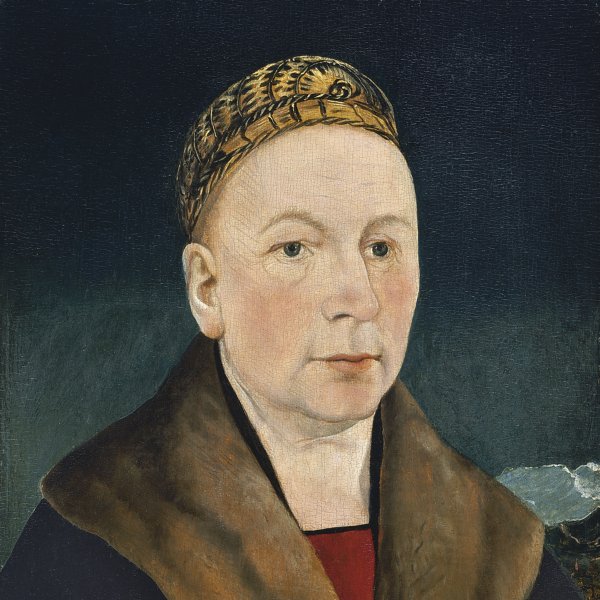Martin Schaffner
Ulm (?), 1478/79-Ulm, 1546/49
Schaffner was a German painter and designer of medals. The date of his birth is known from a drawing for a self-portrait medal of 1522 in which the artist’s age is stated to be forty-four. He is first documented in Ulm in the workshop of Jörg Stocker where he trained. As Stocker’s apprentice, Schaffner worked on the execution of the Saint Martin Altarpiece for Ennetach of 1496, on which his name appears on the painting of Christ with the Cross (Hohenzollern princely collection, Sigmaringen). Around 1500 Schaffner travelled to Augsburg, the most important artistic centre in Germany at that date. There he studied the work of Hans Holbein the Elder, Hans Burgkmair and Dürer’s graphic output. His first masterpiece is the Wettenhausen Altarpiece of 1515, of which eight panels survive in the Schaezlerpalast, Augsburg. Based on a series of prints by Dürer, they reveal a use of colour typical of Augsburg painters and the marked influence of Schäufelein. Over the following years Schaffner’s workshop in Ulm received numerous commissions for altarpieces, including one of 1521 for Lucas Hutz, which is now the main altarpiece in Ulm cathedral, and the second so-called Wettenhausen Altarpiece of 1523 to 1524 for the church of that monastery (Alte Pinakothek, Munich). In 1526 Schaffner was made painter to the city of Ulm.
Schaffner also executed portraits although few examples have survived. The best known is that of Graf Wolfgang van Oettingen of 1508 (Alte Pinakothek, Munich). His activities as a designer of medals are much more extensively documented and a significant group of medals survived, dated between 1522 and 1530, primarily portrait busts of Ulm aristocrats.
Schaffner also executed portraits although few examples have survived. The best known is that of Graf Wolfgang van Oettingen of 1508 (Alte Pinakothek, Munich). His activities as a designer of medals are much more extensively documented and a significant group of medals survived, dated between 1522 and 1530, primarily portrait busts of Ulm aristocrats.





